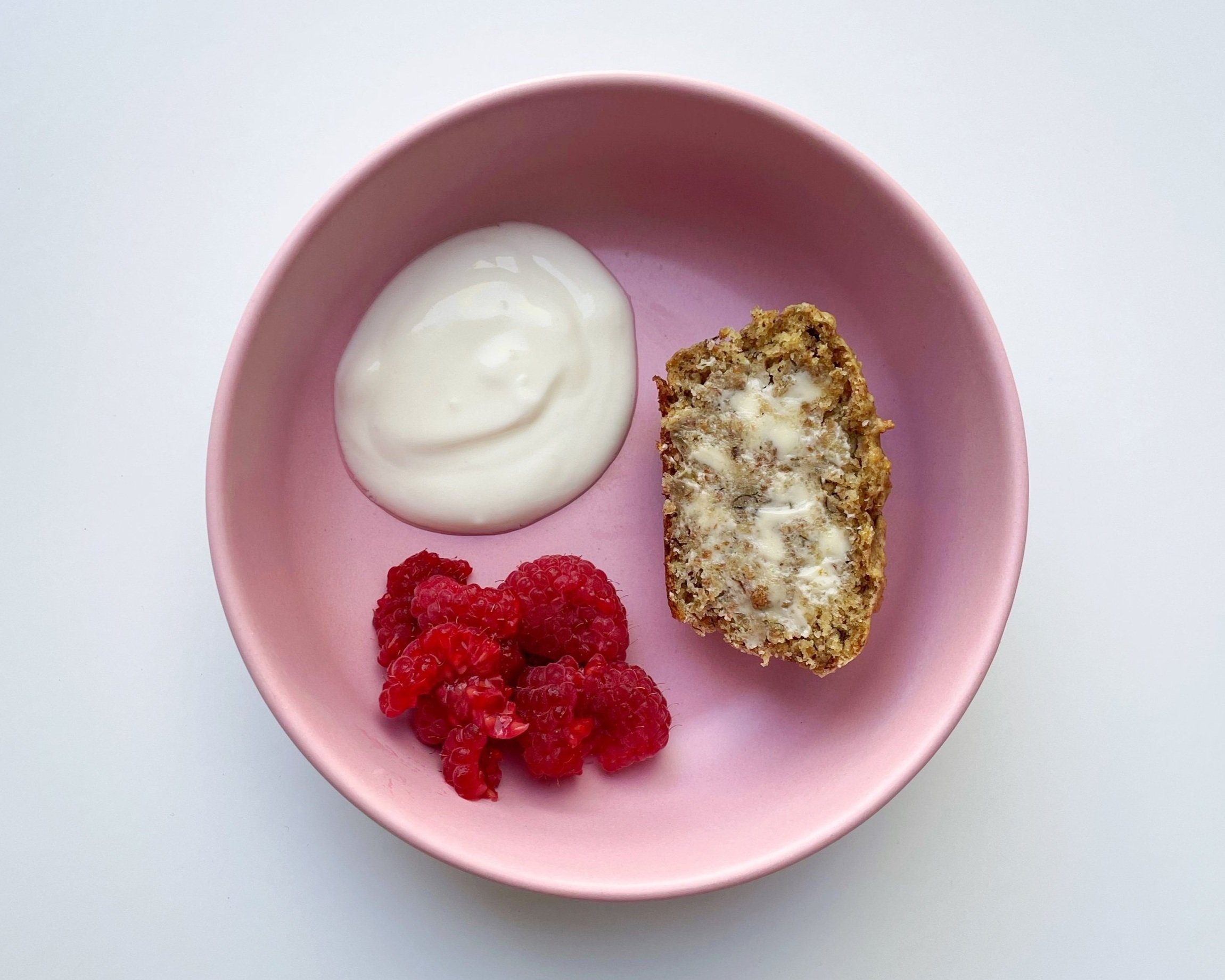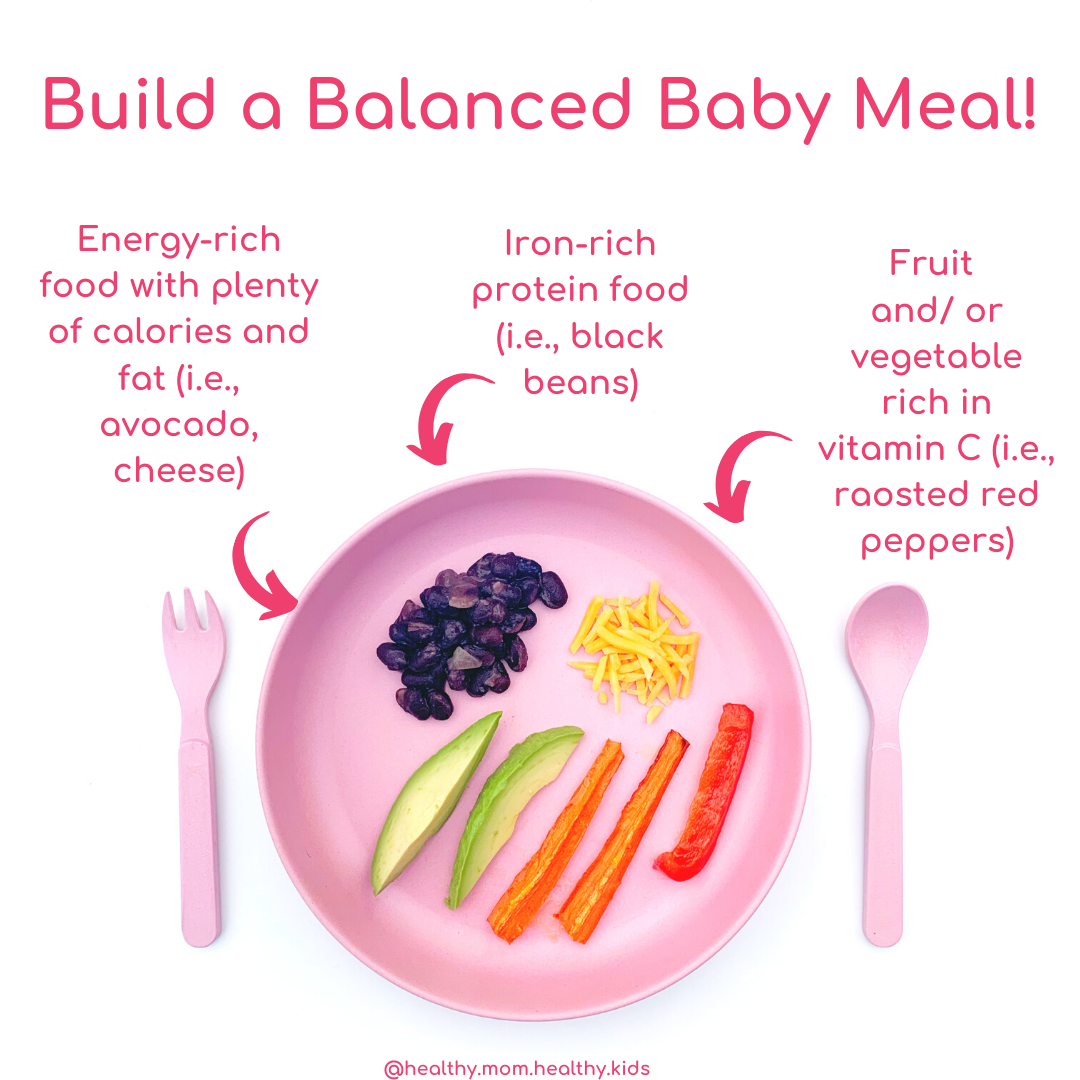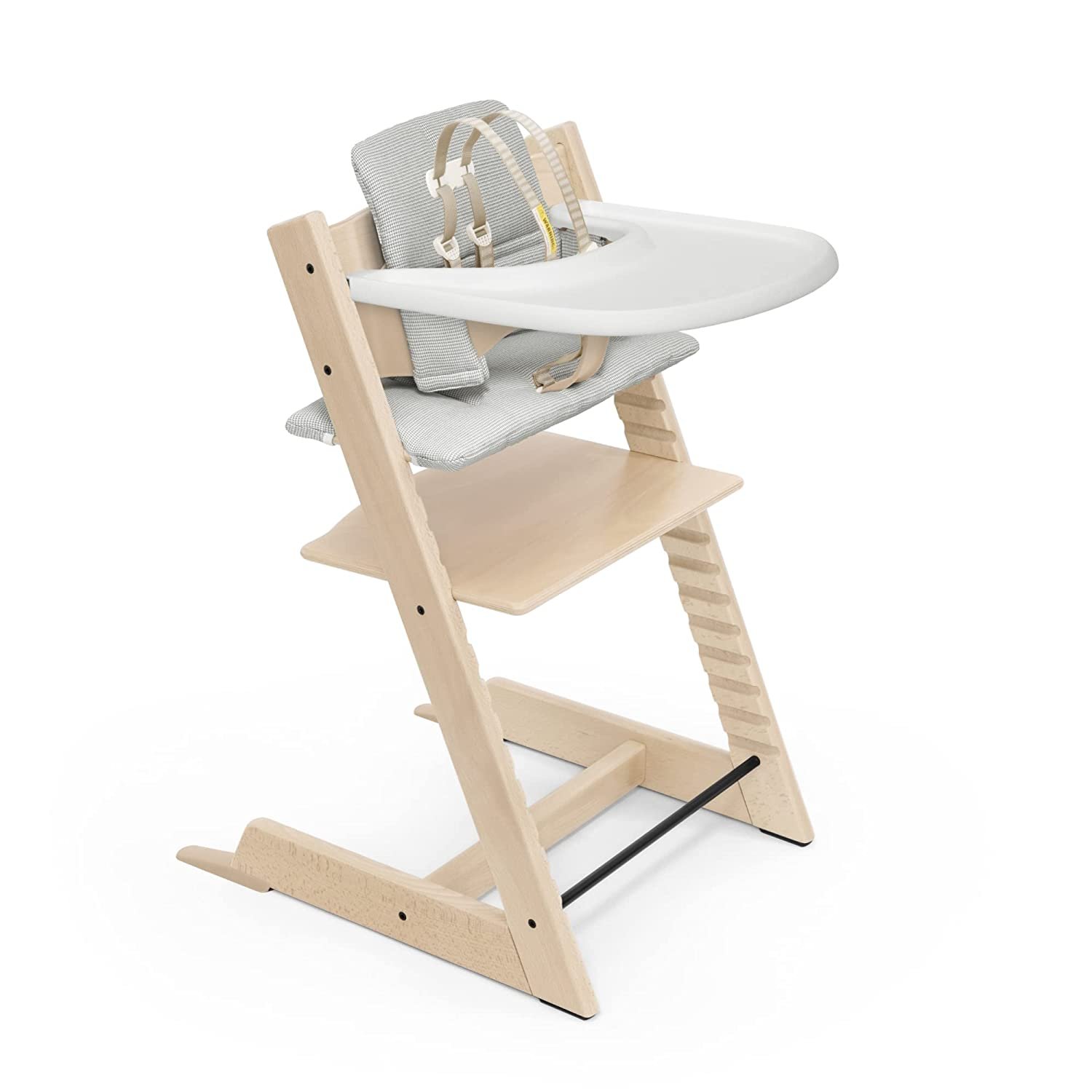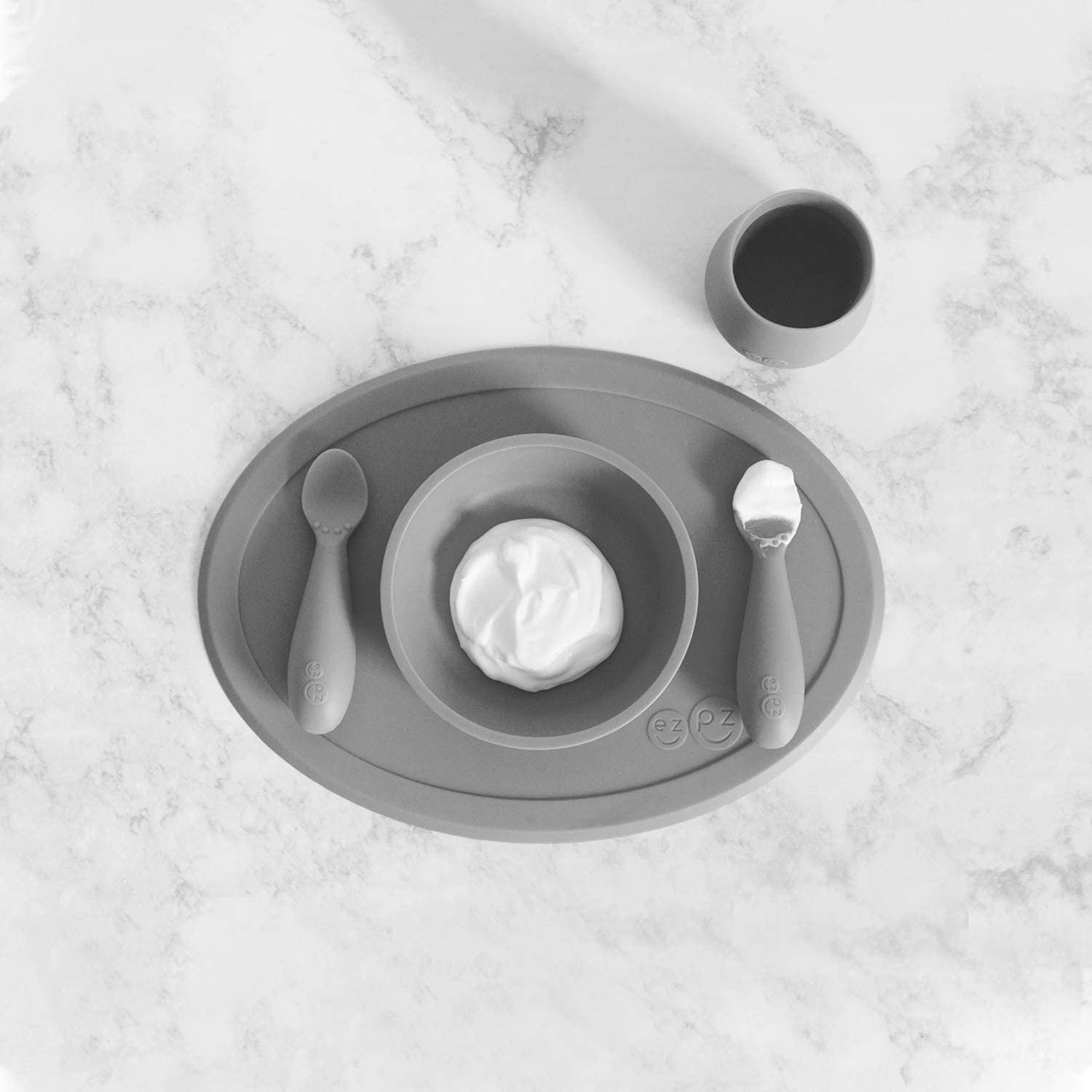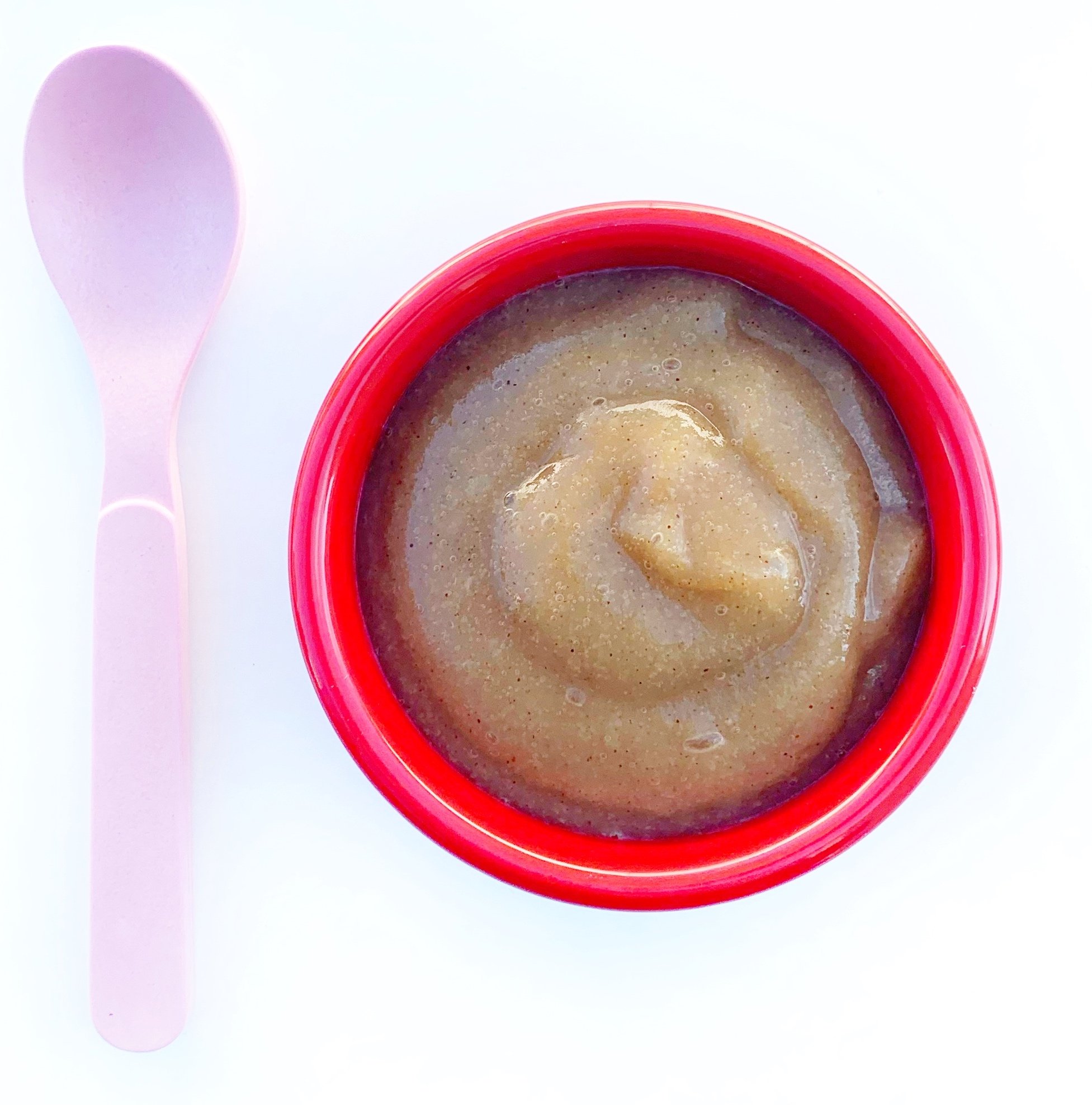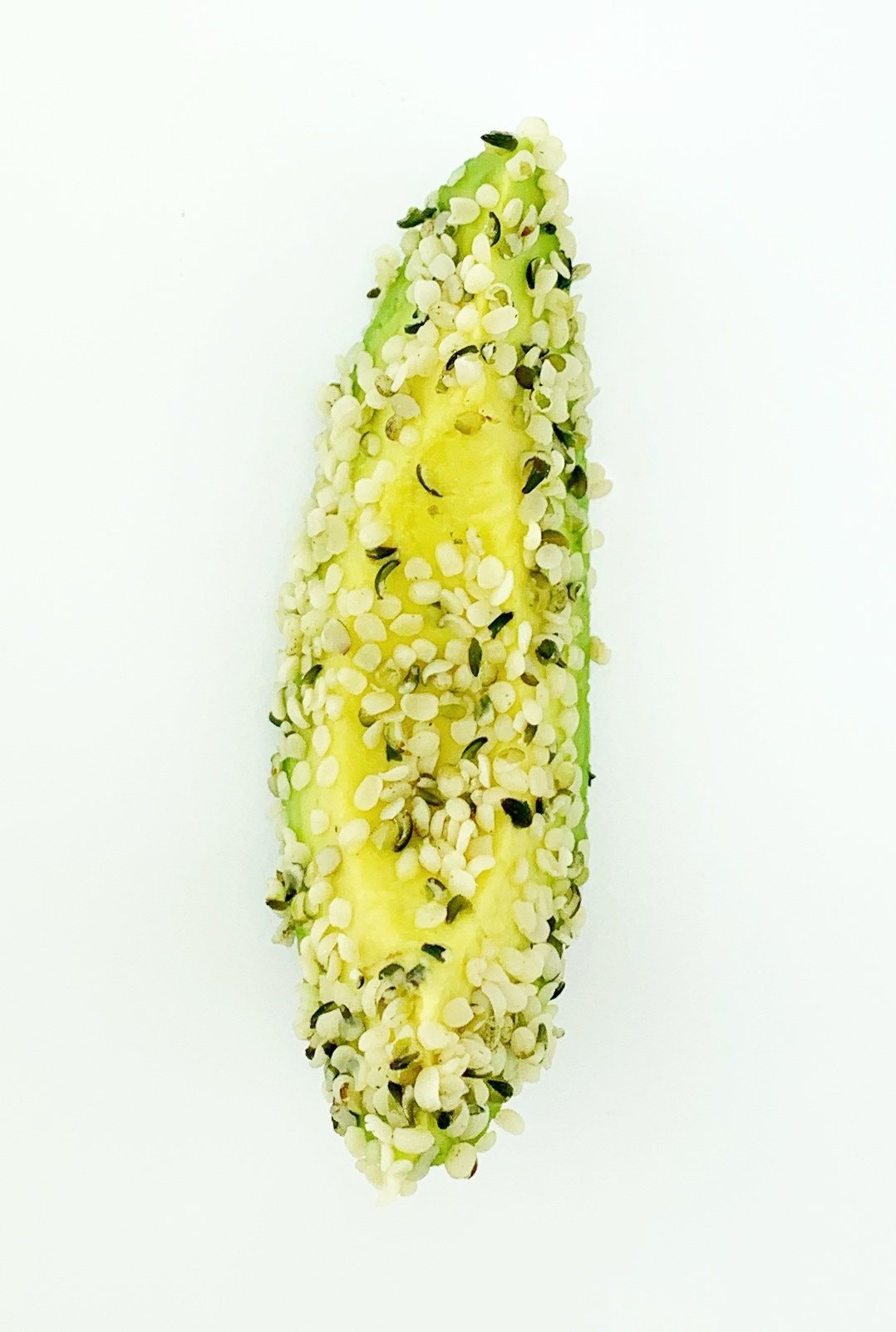Baby-Led Weaning First Foods
This blog contains affiliate links, meaning that if you choose to purchase a product through a link, I will receive a small commission - but this in no way impacts the amount you pay. Affiliate links are marked with an asterisk (*)
Has your little one been eyeing your meals with more interest and even reaching for some of your food? That’s one of the signs that it’s time to introduce a baby’s first foods.
Transitioning from all breast milk or formula to milk plus solids is an exciting developmental milestone. And it's fun for parents, too. You get to witness your little one experiencing joy, curiosity, and, yes, sometimes aversions when they taste flavors for the first time. You may be wondering, what exactly should you feed your baby?
While you may have been inundated with advice from well-meaning family and friends about when and what to feed your child, embarking on the journey of baby-led weaning (BLW) can be both exciting and overwhelming for new parents.
Knowing which first foods to introduce, understanding signs of readiness, and ensuring a safe feeding experience are crucial steps. In this post, my goal is to provide a quick, info-packed guide to help you navigate the world of solid foods and ultimately make the transition to solids easier. Let’s get started!
A 6-month old girl eating solids! Big thanks to her parents for sharing.
What is Baby-Led Weaning?
Baby-led weaning is a method of introducing solid foods where babies feed themselves pieces of foods prepared in baby-safe forms from the start. This approach allows infants to explore different textures and flavors, and helps them develop fine motor skills. Unlike traditional spoon-feeding, BLW lets your baby self-feed from the very beginning.
Instead of starting with pureed foods, BLW introduces babies to a variety of soft, whole foods that they can handle and eat. Examples include soft-cooked vegetables, ripe fruits, and tender-cooked meats.
By letting babies explore and enjoy a variety of textures and flavors, BLW supports a positive attitude toward food, encourages adventurous eating habits and may reduce picky eating.
Benefits of Baby-Led Weaning
Baby-led weaning is a flexible and empowering approach to introducing solid foods. It offers numerous potential benefits, including:
Improved Motor Skills: Self-feeding helps encourage learning through exploration, develop fine motor skills, and hand-eye coordination. Chewing and swallowing require strong jaw muscles and coordination developed with practice.
Increased Variety: Babies exposed to a wide range of flavors and textures may be more open to trying new foods.
Encourages Healthy Eating: Introducing a variety of foods early on can promote healthier eating habits and help prevent picky eating later on.
Encourages Family Mealtime: BLW allows babies to eat the same foods as the rest of the family (with modifications for safety), fostering a more inclusive and social eating environment.
Signs of Readiness for Solids
Babies typically become developmentally ready to start solid foods between 4 and 6 months old. However, the American Academy of Pediatrics (AAP), WHO, AND, and CDC all recommend waiting until about 6 months old when the signs of developmental readiness have emerged.
Although every baby is different, most babies show signs they’re ready for solid food at about 6 months. Before transitioning to solids, babies should be able to sit up independently, grasp objects in their palms, show interest in food, move their heads from side to side, and bring larger objects to their mouths.
From a nutritional standpoint, most babies don't need complementary foods until about 6 months of age, when they start to need food sources of iron and zinc. This is because newborns typically have enough iron stored to last until about the age of 4-6 months. While infant formula in the U.S. contains iron, breast milk is comparatively low in iron.
According to the AAP, exclusively breastfed babies can start solids at about 6 months old when developmentally ready and may need a vitamin D and iron supplement. As a pediatric registered dietitian, I recommend parents discuss with their pediatrician when their baby should start solids and always consult their doctor before providing any supplements.
First Foods for Baby-Led Weaning
Complementary foods aren't just for fun. Babies get many benefits from starting solid food at 6 months old. When introducing solids, prioritize nutrient-dense foods to help your baby meet their nutrient needs. Nutrient-dense foods provide a large amount of vitamins and minerals in every bite. Here are some top recommendations for your baby's first foods:
Iron-rich foods: Since a baby’s iron stores are typically depleted around six months, introducing iron-rich foods is vital. Iron is essential for red blood cell production but also plays a crucial role in brain development. Opt for foods like pureed meats, eggs, fish, iron-fortified cereals, and legumes.
FUN FACT: The brain typically triples in size in a baby's first year!
Fruits and Vegetables: Soft, cooked vegetables (like carrots, broccoli, and sweet potatoes) and ripe fruits (like bananas and avocados) make excellent early foods.
TOP TIP: It is a good idea to pair foods high in Vitamin C, like strawberries, with iron-rich plant foods to help improve iron absorption.
Energy-Rich Foods: These foods contribute calories and fats that provide energy and feelings of fullness while supporting baby’s growth. Examples of energy-rich foods include yogurt, pancakes, avocados, nut butter, toast strips, whole grain or legume pasta, and grated cheese.
Reducing the Risk of Food Allergies
Complementary foods are an opportunity to introduce allergens and help prevent food allergies. Studies show that exposing babies to food allergens early and often may reduce the risk of food allergies, particularly peanut and egg allergies.
The AAP recommends introducing allergenic foods once you begin feeding your baby complementary foods. However, if your baby is at high risk for food allergies, consult your baby's pediatrician before starting the process of introducing top allergens.
The top food allergens are:
peanuts
fish
wheat
sesame
Offer a new allergen food in the morning, well before a nap, so you can watch for any signs of an allergic reaction. If your baby tolerates the food well, try to offer the allergen food at least twice per week going forward. You only need to offer about 2 teaspoons of an allergenic food such as peanut butter (thinned out with breast milk, formula, or water, or mixed into infant cereal to prevent choking) or about one-third of an egg.
If your baby has a diagnosed food allergy, be careful to avoid the allergen. Look for food allergen substitutes that provide the same nutrients so your little one doesn't develop a vitamin deficiency.
Baby Food Purees vs. BLW
Every family is different, and there's no one right way to feed your baby. If you’re one of my baby-led weaning families, you know I’m a huge proponent of transitioning from liquid nutrition right to finger foods. But purees have their place too!
There are three feeding methods for introducing solids to babies.
Baby-led weaning - During BLW, caregivers offer soft, squishable, age-appropriate finger foods for self-feeding
Spoon-feeding - Typically, babies are spoon-fed by a caregiver, starting with smooth purees and moving on to thicker and lumpier mashes as they progress
Combo of BLW and purees - Caregivers offer age-appropriate, soft finger foods for self-feeding in addition to purees fed either on a preloaded spoon for self-feeding or via spoon by the caregiver
By somewhere between 7-12 months of age, the general goal is for all babies to be self-feeding finger foods. BLW offers more opportunities for practice with self-feeding and finger foods early on, however, it’s a personal decision how you choose to introduce solids, coming down to what you’re comfortable with and what works best for you and your baby.
What matters more than deciding between BLW or traditional spoon feeding is feeding responsively, which means responding to baby’s cues of hunger and fullness. Responsive feeding is the feeding model recommended by the WHO, UNICEF, and AAP because it supports and strengthens a baby’s ability to self-regulate intake and helps prevent over- and under-feeding.
BLW and Choking Hazards
Most parents and caregivers I talk to in my private practice, tell me that their greatest source of stress about feeding their children is fear of choking. In fact, I’m often told that fear of choking is the biggest barrier preventing them from starting their babies on solid foods using a baby-led weaning approach.
Studies show that BLW does not increase the risk of choking when developmentally appropriate-sized and textured foods are offered. In fact, this study found that babies who were offered finger foods the least often had the highest frequency of choking episodes.
Until a baby learns to chew and swallow food and has all their teeth, avoid any hard foods that are the size of a baby's airway. Although older children have the feeding skills to better handle these foods, there's still a higher risk of choking with these types of foods.
A few examples of the top choking hazards include:
Whole nuts, grapes, cherry tomatoes
Raw vegetables
Whole large seeds or seed kernels
Whole or large circular sections of hot dogs, sausages, and meat sticks
Hard or sticky candies (including jelly beans, gummy bears, and marshmallows)
Chunks of nut/seed butter (it's okay to thinly spread peanut butter on a cracker or bread)
Large pieces of cheese and raw, hard fruit (especially apples)
Raw leafy greens
Citrus fruit membranes
Whole corn kernels (even if cooked)
Popcorn
Are There Toxic Metals in Commercial Baby Food?
In recent years, there has been a great deal of concern about heavy metals in baby food, sparking debates and prompting regulatory scrutiny. This is not an issue unique to baby food.
Heavy metals, including lead, arsenic, mercury, and cadmium, are present in our food supply. They exist in tiny amounts in the soil and also can be found in water.
Many of the common ingredients used to make commercial baby foods (i.e., rice, carrots, sweet potatoes, etc.) tend to have comparatively higher levels of heavy metals, which doesn’t make these foods “bad” but rather highlights the importance of offering them within the context of a variety of foods, rather than serving them every day or multiple times throughout the day.
That being said, rice cereal contains the most arsenic compared to other infant cereals due to how rice is grown and farmed. Some of my favorite alternatives to rice cereal include iron-fortified oats, millet, quinoa, wheat, buckwheat, and amaranth infant cereals*.
One of the most effective ways we can limit a baby’s exposure to toxic metals is to offer babies a varied, balanced diet. Different foods offer different nutrients -- as well as different levels of contaminants.
Offering a variety helps ensure that babies and children are getting the range of nutrients they need to thrive and grow while helping to ensure that they aren’t taking in too much of any one specific contaminant.
How to Introduce Solid Foods
When your baby is ready to start baby-led weaning, start small and go slow! Here are a few of my top tips to help things go smoothly so you can relax and enjoy the journey.
Use a high chair
Before each feeding, secure the baby in a high chair to limit movement so that they can focus on chewing and swallowing. This lowers the risk of choking and frees a baby’s attention and hands to explore the flavor and feel of new foods.
Using a high chair and utensils* when your baby is ready also makes mealtime easier for you and your baby. Look for age-appropriate baby items like silicone spoons with short, wide handles and bowls with suction cups* on the bottom, which will mean less of a mess to clean up off the floor and less frustration for babies!
2. Start small
Tiny tummies only need a little food at a time. So start with about 1 tablespoon of each food at meals and increase as your baby develops or shows signs of hunger.
If you’re unsure how much a baby should eat, you can learn to identify your little one's hunger and fullness signals. Most healthy babies can regulate their appetite and communicate when they are full. For example, they may lose interest in food, throw their food, turn away, or shake their heads when done.
Try not to stress about the amount of food they eat! Between 6 and 12 months old, babies still get most of their nourishment from formula and/or breast milk. So do your best to have fun with complementary feeding and allow them to go at their own pace. It's okay if they refuse certain foods!
3. Feed responsively, but work toward a feeding schedule
Some parents find baby feeding schedules and routines helpful. Don't worry if your baby's sleep and hunger don't fit this schedule or if your little one doesn't show interest in food at every meal. Every baby is different. And keep in mind the feedings change as you drop a milk feed here and there as your baby grows.
Best Baby-Led Weaning Starter Foods
Before jarred baby food was available, parents gave their little ones soft foods from the family table. Some foods are already a puree or soft consistency, and others need to be cooked to tender, peeled, and/or cut into age-appropriate sizes.
The goal is to offer a variety of foods, so babies learn to accept a range of flavors and textures and grow up to be adventurous eaters. Here’s some guidance to help you determine how to prepare foods for BLW, including the best-sized pieces and textures of foods to give in the first year.
6 to 8 Months
Foods with puree consistency such as yogurt, applesauce, pureed fruits, vegetables and meats, and whole grain infant cereals*.
Soft “squishable” foods such as bananas, avocados, eggs, toast strips topped with nutritious spreads, and tofu are naturally soft foods babies can break down with their gums before they have teeth.
Cut to 2.5 - 5 inches (the size of 1-2 adult pinky fingers) so that babies can palm them up to the mouth using a palmar grasp.
9 to 12 months
Finger foods such as chicken, peas, Cheerios, beans, chopped and peeled cooked vegetables and fruits (like pear or strawberries), and tender-cooked pasta are great options.
Cut into bite-size small pieces of soft food about the size of a chickpea so babies can use their pincer grasp to self-feed.
Foods To Avoid During the First Year
In general, there aren't too many hard & fast rules about what they should and shouldn't have, but there are some foods that aren't safe for infants and should be avoided during the first year of life (or longer, in some cases, including:
100% Fruit Juice - The Dietary Guidelines for Americans recommend avoiding juice the first year. Juice isn't necessary after a baby turns one, and many pediatricians recommend skipping it altogether, even beyond age 1.
Honey and Unpasteurized Dairy Foods - Honey and unpasteurized dairy foods can carry bacteria that are dangerous for a baby's undeveloped immune system. Wait until after age 12 months for honey and after at least 5 years of age for unpasteurized dairy foods to give your baby’s digestive and immune systems enough time to develop and provide protection from serious illness if they ingest bacteria found in these foods.
Added Sugars - According to the AAP and Dietary Guidelines, babies under two should avoid added sugars. Added sugars increase the risk of some diseases, can establish a taste preference for sweet foods, and may displace nutritious foods in a baby’s diet.
Cow’s milk - Breast milk and/or iron-fortified infant formula should be the only source of nutrition during the first 6 months of life. Complementary feeding at 6 months includes dairy foods, but a baby's digestive system isn't ready for cow's milk as a beverage. Although babies can have small amounts of cow’s milk and plant-based milk in recipes, these drinks shouldn’t be offered in a bottle or as a beverage.
High Sodium Foods - Sodium is an electrolyte that regulates fluid in the body. Babies can dehydrate and ingest too much water for their little bodies. While adding a small amount of salt here and there is okay, it’s important to avoid the most high-sodium foods including pickles, soy sauce, chips and crackers, fast food, and ultra-processed frozen and packed foods.
If your baby is almost ready to start solids and you’re looking for someone you trust to map out the entire process of food allergy prevention and allergen introduction for you, check out my new book, Safe and Simple Food Allergy Prevention: A Guide to Starting Solids and Introducing Allergens with 80 Family-Friendly Recipes! It comes with a complete plan for allergen introduction + 8 weeks of allergen introduction meal plans, an up-to-date guide on baby-led feeding, and more.
You’ll also want to download my FREE Baby-Led Feeding Starter Guide to get the basics of baby-led weaning, as well as a budget-friendly list of the few essentials you need to get started.
Depending on how you prefer to learn, you might also want to check out my online BLW course for parents, which is a series of short videos that walk you through the whole process of starting solids using a baby-led approach. Happy feeding!

